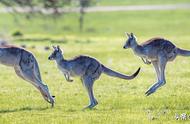检索出来的文章标题都是“year of the pig”,不是“pig year”,所以我们就可以得出一个结论:
表达中国“生肖年”的地道英语结构是:year of the 某个生肖的英文。
再来聊聊“鼠”的单词。
在我们印象中,“鼠”只有两个词 mouse 和 rat。
mouse 是单数,复数形式为 mice;rat 的复数很简单,就是 rats。那么这两个词有何区别?下面是牛津词典截图:

Mouse: animal that is covered in fur and has a long thin tail. Mice live in fields, in people’s houses or where food is stored.
[译] mouse 指的是全身灰毛,尾巴细长的动物。它们生活在田地里、人们的家中、以及储藏食物的地方。

rat: a small animal with a long tail, that looks like a large mouse, usually considered a pest.
[译] 一种有着长尾巴的动物,看着像大型的 mouse,通常被认为是 pest(害虫,有害的动物)。
通过比较两个词的定义,我们能找到的唯一差别就是:rat是一种体型更大的 mouse。
我后来在网上又搜到了一张详细对比图,给出了mouse 和 rat 更多差别:

左边是 mouse,右边是 rat
归纳一下,mouse 和 rat 大致有这四种区别:
1. mouse 体型小(身长12-20cm);rat体型大(身长40 cm)
2. mouse 尾巴有毛(hairy);rat 尾巴有鳞(scaly)
3. mouse的嘴是尖的(triangular);rat 的嘴相对更平(blunt)
4. mouse 每天产生的老鼠屎(droppings)是 rat 的两倍。
说了这么多,“鼠年”到底用 mouse 还是 rat?















